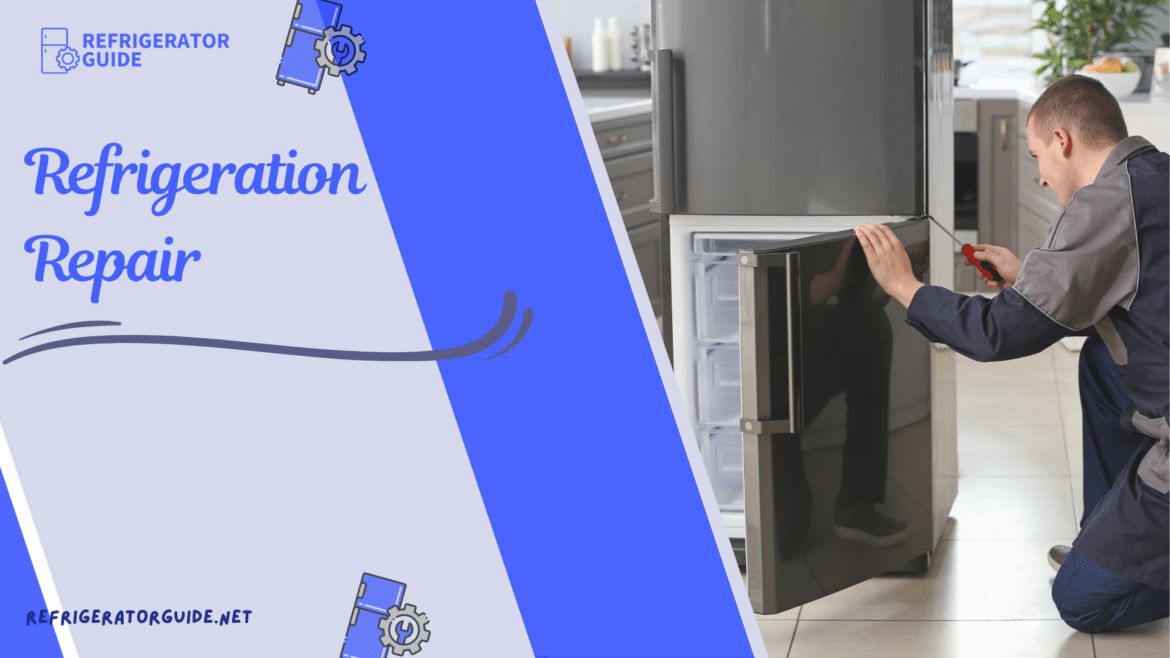Table of Contents
A fine working refrigerator in an excellent condition, what could be better than this during a hot summer season! Right? But wait, is your fridge causing problems again? Is it the musty smell> Not cooling enough? Water leaking? Well to be really honest with you, there may be several reasons why your fridge might be causing problems but only one solution stands; refrigeration repair. A broken refrigerator may interrupt your routine, and food could spoil. Awareness of frequent problems and how to solve them can save time and money. Let us walk you through the crucial procedures for refrigeration repair, assisting you in diagnosing and resolving issues with a malfunctioning freezer or refrigerator. But first, let us take a look at some of the problems to fix!
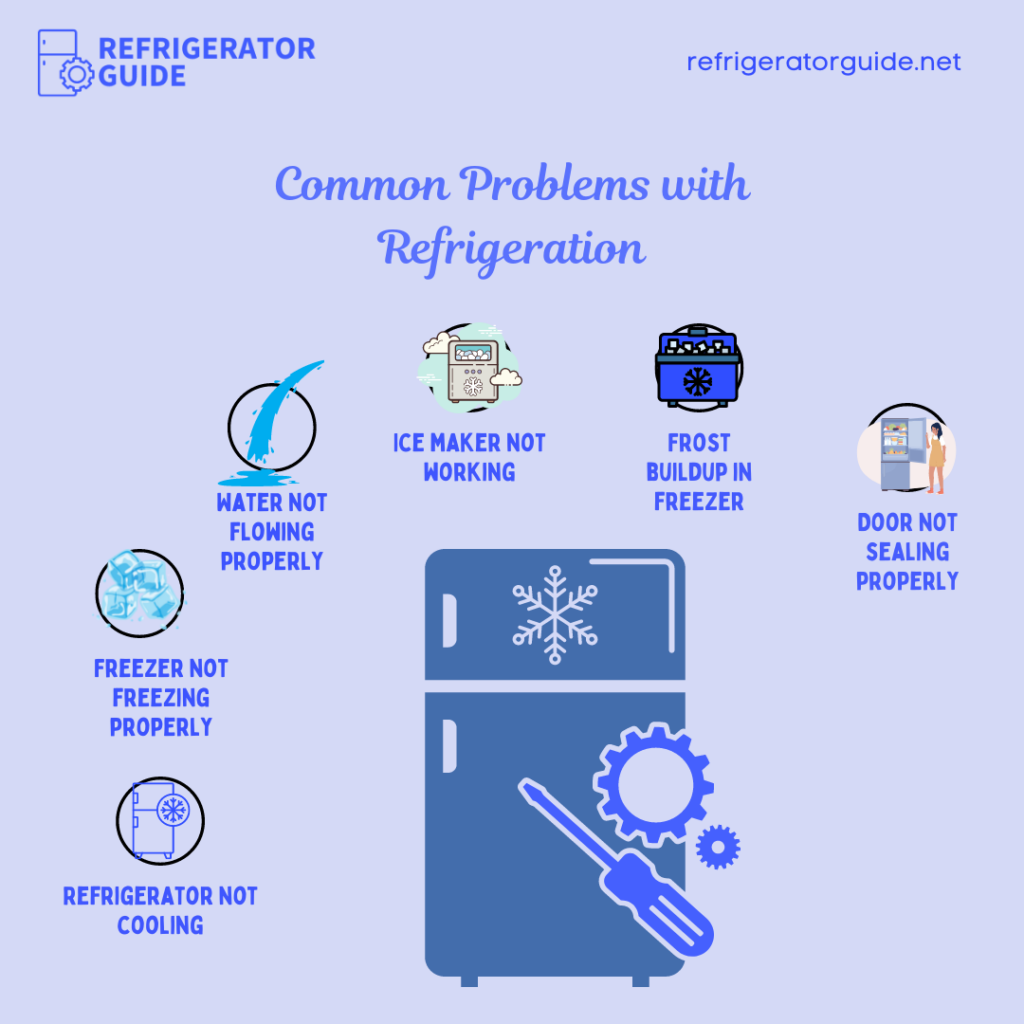
Common Refrigerator Problems
Noisy fan, water line pipe leaking, too much frost inside? The issues could be many, you just name them. When your refrigerator stops functioning correctly, it’s critical to identify the problem. The following are some typical issues you may encounter;
- Refrigerator Not Cooling: If your refrigerator isn’t cooling, it can be because of a broken evaporator, condenser, or compressor fan.
- Freezer Issues: The freezer section may have needed help if there is ice accumulation or adequate cooling.
- Water Flow Issues: A blockage or broken part could be the cause if water isn’t getting to the water valve or ice maker.
If you encounter a broken refrigerator, start by doing simple repairs, including cleaning the coils or inspecting the compressor. Nevertheless, if you’re unsure how to fix your freezer compartment or refrigerator, don’t be afraid to consult an expert. You can maintain the smooth operation of your appliance by being aware of these typical fridge repair problems. Or how about you take at some of these tips for refrigeration repair?
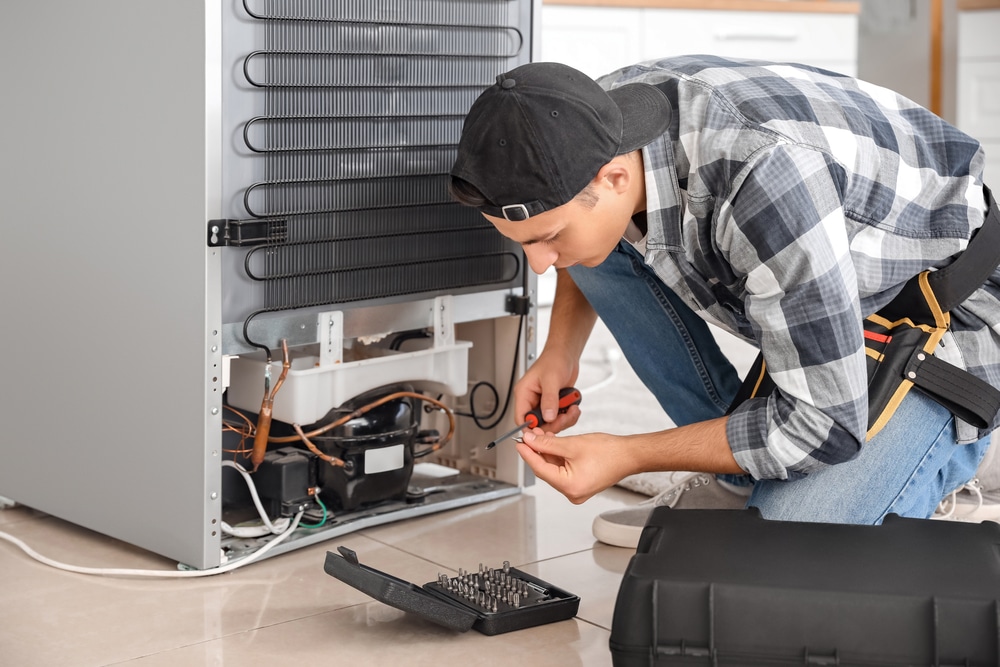
7 Tips to Repair Your Refrigerator
If your refrigerator stops working, follow these seven steps to diagnose and potentially fix the issue before calling a professional.
Step 1: Check the Power Supply
The first thing for refrigeration repair is to check the power supply.
- Inspect the Plug: Ensure the refrigerator is plugged in securely.
- Check the Outlet: Test the outlet with another appliance to confirm it’s working.
- Look for Tripped Breakers: Reset any tripped circuit breakers in your electrical panel.
Step 2: Examine the Door Seals
A faulty door seal can lead to cool air escaping, making your fridge less effective.
- Inspect for Tears or Gaps: Look closely at the door seals for any signs of wear.
- Clean the Seals: Use warm, soapy water to clean the seals, ensuring they close tightly.
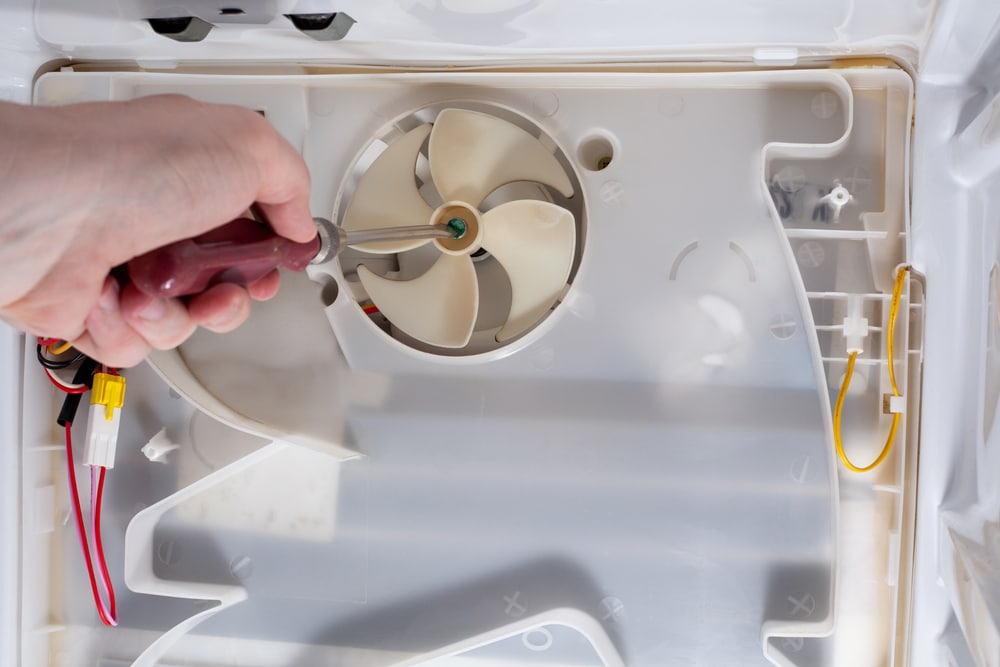
Step 3: Remove the Fan
If you hear unusual noises or if the refrigerator is not cooling properly, the fan motor might be malfunctioning.
- Unplug the Refrigerator: Always disconnect the power before performing any repairs.
- Locate the Fan: Typically found at the back or underneath the refrigerator.
- Remove Screws: Take out any screws that secure the fan in place and carefully remove the fan for inspection.
Step 4: Inspect the Condenser Fan
The condenser fan helps circulate air around the condenser coils. If it’s not working, your refrigerator may overheat.
- Check for Obstructions: Make sure the fan isn’t blocked by dust or debris.
- Test the Motor: If the fan isn’t running, it might need to be replaced.
Step 5: Troubleshoot the Compressor
A faulty compressor is often a significant issue in refrigeration repairs.
- Listen for the Compressor: It should make a low humming sound when functioning properly.
- Check for Overheating: If the compressor is hot to the touch, it may need professional repair or replacement.
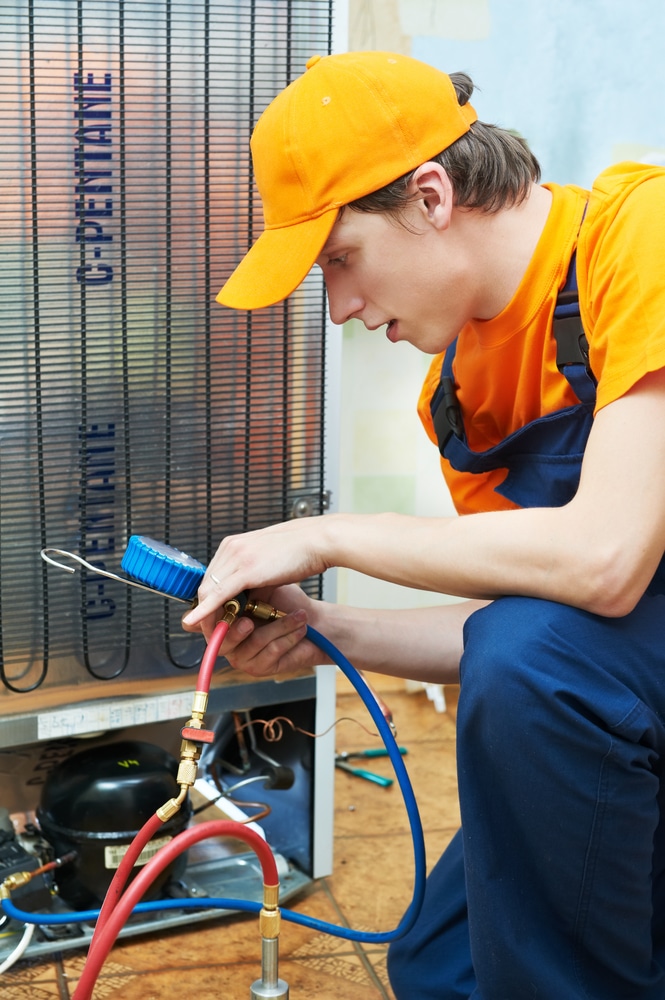
Step 6: Repair the Water Valve
If your ice maker isn’t producing ice or water flows poorly, the inlet valve might be the culprit.
- Locate the Water Valve: Usually found at the back of the refrigerator.
- Inspect for Clogs: Clean any blockages and ensure water is flowing correctly.
Step 7: Call a Professional
If these DIY steps don’t resolve the issue, it may be time to call a professional, especially for more complicated problems like a faulty compressor or commercial refrigeration repairs that require specialized knowledge.
Additional Tips for DIY Refrigerator Repair
You all must know how important tools are before you are starting your fridge repair. Here’s are some tips when you start.
Gather Necessary Tools: Before starting any repairs, have the following tools on hand:
- Screwdriver (Phillips and flathead)
- Multimeter (for electrical testing)
- Pliers
- Towels (for spills)
Refer to Your Manual: Consult your refrigerator’s manual for specific troubleshooting and repair instructions.
Document Your Repairs: Keep track of any repairs you make for future reference.
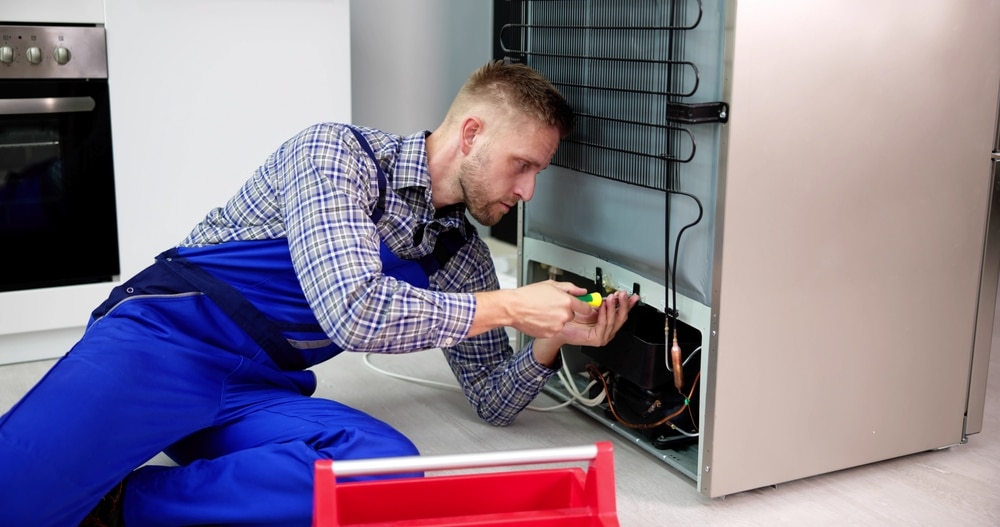
Final Thoughts
Summing up, knowing how to fix your refrigerator allows you to deal with typical problems successfully. The seven refrigerator repair recommendations walk you through replacing the fan motors, tightening the screws that hold on, and checking the door seals. Examine the inlet valve and condenser fan to see if your refrigerator stops cooling or functioning. Understanding how to fix an ice maker or refrigerator compressor can be very helpful for do-it-yourselfers. However, expert assistance could be a necessary issue.
In conclusion, you may prevent the inconvenience of dealing with a damaged appliance or minor problems by following these procedures to maintain the proper operation of your refrigerator.
SIP ON A COOL DRINK RIGHT FROM YOUR REFRIGERATOR!
